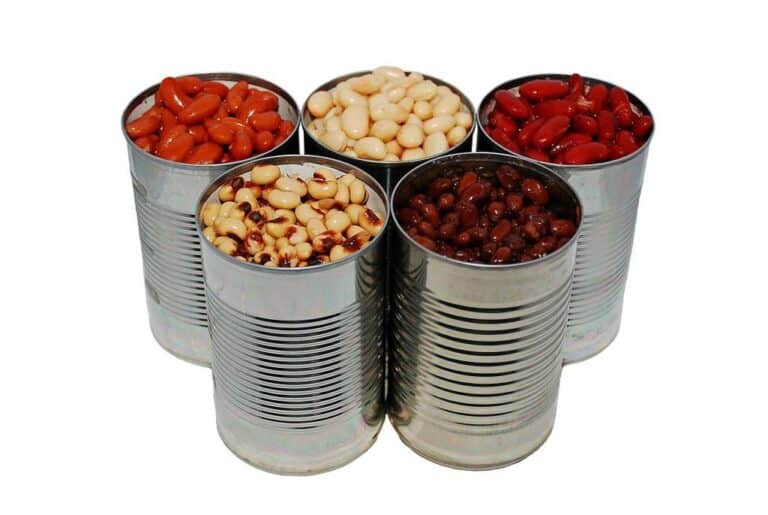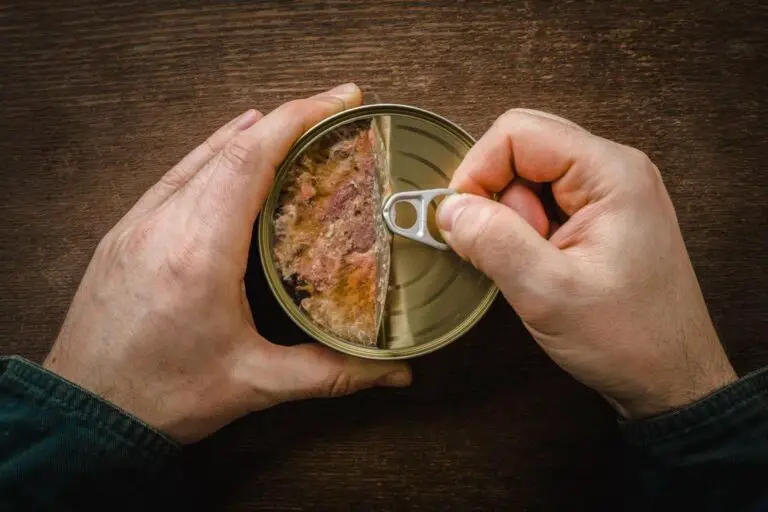How Long Does Broccoli Salad Last? Keep Freshness and Preservation

Broccoli salad is a delightful dish that combines the crunchiness of fresh broccoli florets with a tangy dressing, making it a popular choice for picnics, potlucks, or as a refreshing side for any meal.
But if you’ve ever made a large batch of broccoli salad, you may have wondered how long it would stay fresh and tasty.
In this article, we’ll delve into the topic of broccoli salad freshness and preservation, providing you with valuable insights and tips to ensure your salad stays delicious for as long as possible.
The Importance of Freshness in Broccoli Salad
Freshness plays a vital role in preserving the taste and nutritional value of broccoli salad. The vibrant green color and crisp texture of fresh broccoli contribute to its overall appeal. Additionally, the longer broccoli salad is stored, the more it can lose its original flavors and become soggy or wilted. Therefore, understanding how to maintain its freshness is key to enjoying a delightful salad experience.
Factors such as storage conditions and the ingredients used can significantly affect the freshness of broccoli salad. For instance, exposure to warm temperatures can accelerate spoilage, while incorporating high-moisture ingredients can make the salad more prone to wilting. By being mindful of these factors, you can ensure your broccoli salad stays fresh and appetizing for an extended period of time.
The Shelf Life of Broccoli Salad
The shelf life of broccoli salad can vary depending on several factors. On average, if properly stored, broccoli salad can last for about 3 to 5 days in the refrigerator. It’s crucial to keep in mind that the salad’s additional ingredients and the type of dressing used might affect its shelf life.
Dressings that contain mayonnaise or other dairy products have a shorter shelf life compared to vinaigrette-based dressings. This is because dairy-based dressings can spoil faster, potentially leading to foodborne illnesses if consumed beyond their recommended storage period. If you prefer using dairy-based dressings, it’s advisable to consume the salad within a day or two to ensure freshness and safety.
Tips for Storing Broccoli Salad
Now that we know the factors influencing shelf life, let’s explore some storage tips to help you maintain the freshness and quality of your broccoli salad:
- Refrigeration: To maximize the shelf life of your broccoli salad, store it in the refrigerator as soon as possible. Keeping it at a temperature below 40°F (4°C) slows down the growth of bacteria, ensuring your salad stays fresh longer.
- Airtight Containers: Use airtight containers or resealable plastic food packaging bags to store your salad. This helps prevent air exposure, which can cause wilting and deterioration. Make sure the containers are clean and dry before transferring your salad.
- Separate Dressing: If possible, store the dressing separately from the salad. This prevents the broccoli from becoming soggy and helps maintain their crispness. Add the dressing just before serving or when you’re ready to eat.
- Layering: If your salad contains multiple ingredients, consider layering them in the container. Place sturdier ingredients like broccoli at the bottom, then more delicate ones like lettuce or herbs. This arrangement helps protect the more delicate components from becoming crushed or wilted.
- Avoid Overdressing: When preparing your broccoli salad, it’s best to dress only the portion you plan to consume immediately. Excess dressing can make the salad soggy and lead to quicker spoilage. If you have leftover salad, store it without dressing and add the desired amount just before serving.
- Frequent Stirring: If you’re storing a broccoli salad with dressing, give it a gentle stir before refrigerating. This ensures that the dressing coats the ingredients evenly and helps maintain their freshness. Stirring also prevents the dressing from settling at the bottom, making it easier to mix when you’re ready to serve.
- Fresh Ingredient Selection: Opt for fresh, high-quality ingredients when making your broccoli salad. Choosing crisp and vibrant vegetables ensures a longer shelf life. Check the quality of your ingredients before use and discard any spoiled or wilted portions.
- Proper Handling: Practice good hygiene and proper food handling techniques when preparing and serving your broccoli salad. Wash your hands thoroughly before touching the ingredients, and use clean utensils and cutting boards. Avoid cross-contamination by keeping raw meat and poultry separate from the salad.

Signs of Spoilage in Broccoli Salad
It’s essential to be able to identify when broccoli salad has gone bad to avoid any potential health risks. Here are some common signs of spoilage to watch out for:
- Off odors: If your broccoli salad smells unpleasant or foul, it is likely spoiled. Trust your sense of smell and discard the salad if it doesn’t smell fresh.
- Discoloration: Fresh broccoli salad should have vibrant green florets. If you notice any browning or discoloration on the broccoli or other ingredients, it indicates spoilage.
- Slimy texture: A slimy or mushy texture is a clear sign that the salad has passed its prime. Fresh broccoli salad should have a crisp and crunchy texture, so any sliminess is a strong indication of spoilage.
- Mold growth: If you spot any mold growth on the broccoli or other components of the salad, it’s best to discard it immediately. Mold can release toxins and pose health risks if consumed.
If you observe any of these signs of spoilage, it’s important not to consume the broccoli salad, as it may lead to foodborne illnesses. It’s always better to be safe than sorry when it comes to your health and the well-being of those enjoying your culinary creations.
Recipe: Creamy Broccoli and Cheddar Soup with Crusty Bread
Extending the Freshness of Broccoli Salad
While the shelf life of broccoli salad is limited, there are several techniques you can employ to extend its freshness:
- Refrigerate promptly: As mentioned earlier, refrigerating the salad as soon as possible after preparation is crucial. Aim to store it in the refrigerator within two hours of making it to minimize bacterial growth.
- Use fresh ingredients: Start with fresh, high-quality ingredients when making broccoli salad. Fresh broccoli, crisp vegetables, and quality dressings contribute to a longer-lasting salad.
- Separate dressings and toppings: To prevent the salad from becoming soggy, keep the dressing and toppings separate until serving. Store them in individual containers and combine them just before enjoying the salad.
- Consider ingredient substitutions: If you know you won’t consume the entire batch of broccoli salad within a few days, you can substitute certain ingredients to prolong its freshness. For example, you can replace mayonnaise with a vinaigrette-based dressing or opt for lighter ingredients that don’t spoil as quickly.
By implementing these techniques, you can enjoy your broccoli salad for a slightly longer period of time while maintaining its quality and freshness.
Factors That Affect the Preservation of Broccoli Salad
Several factors can impact how well broccoli salad is preserved:
- Temperature: Broccoli salad should be stored at a cool temperature, ideally between 32°F (0°C) and 40°F (4°C). Avoid storing it at room temperature for extended periods, as bacteria can multiply rapidly in the “danger zone” of 40°F to 140°F (4°C to 60°C).
- Air exposure: Exposure to air can lead to oxidation and faster deterioration of the salad. When storing the salad, make sure to remove any excess air from the container and seal it tightly to minimize air contact.
- Ingredient freshness: The freshness of individual ingredients used in the salad contributes to its overall preservation. Ensure that the broccoli, vegetables, and other components are fresh before incorporating them into the salad.
- Cross-contamination: To avoid cross-contamination and the risk of bacterial growth, keep raw meat, poultry, and seafood separate from the broccoli salad during storage. Store them in separate containers and different areas of the refrigerator.
By paying attention to these factors, you can significantly improve the preservation of your broccoli salad and maintain its freshness for a longer period.
Tips for Preparing Broccoli Salad in Advance
Preparing broccoli salad in advance can be a time-saving strategy, especially when you have a busy schedule. Follow these tips to ensure your salad stays fresh when making it ahead of time:
- Prep the ingredients separately: Cut the broccoli into florets and chop other vegetables ahead of time, but keep them separate until you’re ready to assemble the salad. This helps prevent wilting and maintains the crispness of the vegetables.
- Store dressing separately: Instead of dressing the salad in advance, store the dressing in a separate container. Add the dressing just before serving to maintain the salad’s texture and prevent it from becoming soggy.
- Keep toppings separate: If your broccoli salad includes toppings like nuts, seeds, or crispy bacon, store them separately and add them right before serving. This helps preserve their texture and prevents them from becoming soft or losing their crunch.
- Refrigerate properly: Once you’ve assembled the salad with the dressing, cover it tightly with plastic wrap or transfer it to an airtight container. Place it in the refrigerator immediately to maintain its freshness until it’s time to serve.
- Consume within 24 hours: While prepared broccoli salad can typically last for a few days, for the best flavor and texture, it’s recommended to consume it within 24 hours of preparation. This ensures that the ingredients remain at their freshest and the salad retains its optimal taste.
By following these tips, you can enjoy the convenience of preparing broccoli salad in advance without sacrificing its freshness and quality.
Creative Ways to Use Leftover Broccoli Salad
If you find yourself with leftover broccoli salad, there’s no need to let it go to waste. Get creative and repurpose it into delicious new dishes. Here are a few ideas to inspire you:
- Broccoli Salad Wraps: Take large lettuce leaves or tortillas and fill them with leftover broccoli salad. Add some grilled chicken or tofu for added protein and roll it up for a tasty and refreshing wrap.
- Broccoli Salad Stuffed Baked Potatoes: Scoop out the centers of baked potatoes and fill them with your leftover broccoli salad. Top with shredded cheese and bake until the cheese is melted and bubbly for a flavorful side dish.
- Broccoli Salad Quiche: Incorporate the leftover salad into a quiche mixture along with beaten eggs, milk, and cheese. Pour the mixture into a pie crust and bake until golden and set. Serve it as a savory brunch option or light dinner.
- Broccoli Salad Pasta: Toss your leftover broccoli salad with cooked pasta, a drizzle of olive oil, and some grated Parmesan cheese. This creates a quick and delicious pasta dish with a refreshing twist.
These are just a few ideas to help you transform your leftover broccoli salad into exciting new meals. Feel free to experiment and let your culinary imagination run wild.
The Nutritional Benefits of Broccoli Salad
Beyond its delightful flavors, broccoli salad also offers numerous health benefits. Broccoli itself is a nutrient-dense vegetable packed with vitamins, minerals, and fiber. Here are some of the key nutritional benefits of broccoli salad:
- Vitamin C: Broccoli is an excellent source of vitamin C, which plays a vital role in supporting the immune system and promoting collagen production for healthy skin.
- Fiber: Broccoli is high in dietary fiber, which aids digestion, helps maintain healthy cholesterol levels, and contributes to feelings of fullness, making it a great addition to a balanced diet.
- Antioxidants: Broccoli contains antioxidants like vitamins A and E, which aid in preventing cell damage from harmful free radicals.
- Vitamin K: Broccoli is rich in vitamin K, which is essential for blood clotting and maintaining healthy bones.
- Folate: Folate, a B-vitamin found in broccoli, is important for cell growth and development, making it especially beneficial for pregnant women.
By incorporating broccoli salad into your diet, you can enjoy these nutritional benefits while savoring its delicious flavors.
Safety Considerations When Consuming Broccoli Salad
While broccoli salad is a healthy and delicious choice, it’s important to follow some safety considerations to ensure food safety. Here are a few guidelines to keep in mind:
- Wash the broccoli: Before using fresh broccoli in your salad, thoroughly wash it under running water to remove any dirt or contaminants that may be present on the surface.
(Read: How To Clean Broccoli From Worms and Bugs?)
- Handle ingredients properly: When preparing the salad, make sure to practice good food hygiene. Use clean utensils, cutting boards, and preparation surfaces to avoid cross-contamination with harmful bacteria.
- Refrigerate promptly: As mentioned earlier, refrigerate the broccoli salad promptly after preparation. Leaving it at room temperature for too long can promote bacterial growth and increase the risk of foodborne illnesses.
- Check expiry dates: If you’re using store-bought dressings or pre-packaged ingredients, always check the expiry dates to ensure freshness. Using expired ingredients can compromise the quality and safety of your broccoli salad.
- Avoid leaving the salad at room temperature: When serving the salad, avoid leaving it at room temperature for extended periods, especially in warm environments. Bacteria multiply rapidly in the “danger zone” between 40°F (4°C) and 140°F (60°C), increasing the risk of foodborne illnesses.
- Discard leftovers after a few days: While it’s tempting to stretch the lifespan of your broccoli salad, it’s best to consume it within the recommended storage period of 3 to 5 days. If there are any leftovers beyond that timeframe, discard them to avoid the risk of food poisoning.
- Be mindful of food allergies and sensitivities: If you’re serving broccoli salad to a group of people, be considerate of any known food allergies or sensitivities. Common allergens like nuts or dairy may be present in the salad, so it’s essential to inform your guests about the ingredients used.
By adhering to these safety guidelines, you can enjoy your broccoli salad with peace of mind, knowing that you’re taking the necessary precautions to ensure its safety and the well-being of those consuming it.
In Conclusion
Broccoli salad is a delightful and nutritious dish that can be enjoyed on various occasions. By understanding how to maintain its freshness, practicing proper storage techniques, and being mindful of safety considerations, you can maximize the shelf life and quality of your broccoli salad. Whether you’re preparing it in advance or repurposing leftovers, there are numerous ways to enjoy this refreshing salad while exploring creative variations. So go ahead, savor the crispness, flavors, and health benefits of broccoli salad, and elevate your culinary repertoire.
FAQs
What ingredients can I add to enhance the flavor of broccoli salad?
Some popular additions to enhance the flavor of broccoli salad include red onions, raisins, dried cranberries, sunflower seeds, or crumbled bacon.
Is it necessary to blanch broccoli before making broccoli salad?
Blanching broccoli before making the salad is optional. Blanching can help soften the broccoli slightly and enhance its vibrant green color, but it’s not necessary for the salad’s overall taste and freshness.
Can I substitute mayonnaise with a healthier dressing option?
Yes, if you prefer a healthier alternative to mayonnaise, you can substitute it with Greek yogurt, sour cream, or a vinaigrette-based dressing. These options provide a lighter and healthier dressing while maintaining the salad’s creaminess.
How do I prevent broccoli salad from becoming too watery?
To prevent excessive moisture in your broccoli salad, avoid adding dressing or juicy ingredients until just before serving. You can also pat the broccoli florets dry before incorporating them into the salad.
Can I use frozen broccoli to make a broccoli salad?
While fresh broccoli is preferred for optimal taste and texture, you can use thawed and drained frozen broccoli as a substitute. However, keep in mind that frozen broccoli may have a slightly softer texture compared to fresh broccoli.
Are there any specific food safety guidelines I should follow when preparing broccoli salad?
Yes, it’s important to follow general food safety guidelines when preparing broccoli salad. These include washing your hands before handling food, using separate cutting boards for raw meat and vegetables, and refrigerating perishable ingredients promptly. Additionally, make sure to clean your utensils and containers properly to prevent cross-contamination.
Can I freeze broccoli salad for later use?
Freezing broccoli salad is not recommended. The texture and quality of the ingredients, especially the fresh vegetables, may deteriorate upon thawing, resulting in a less desirable salad.






